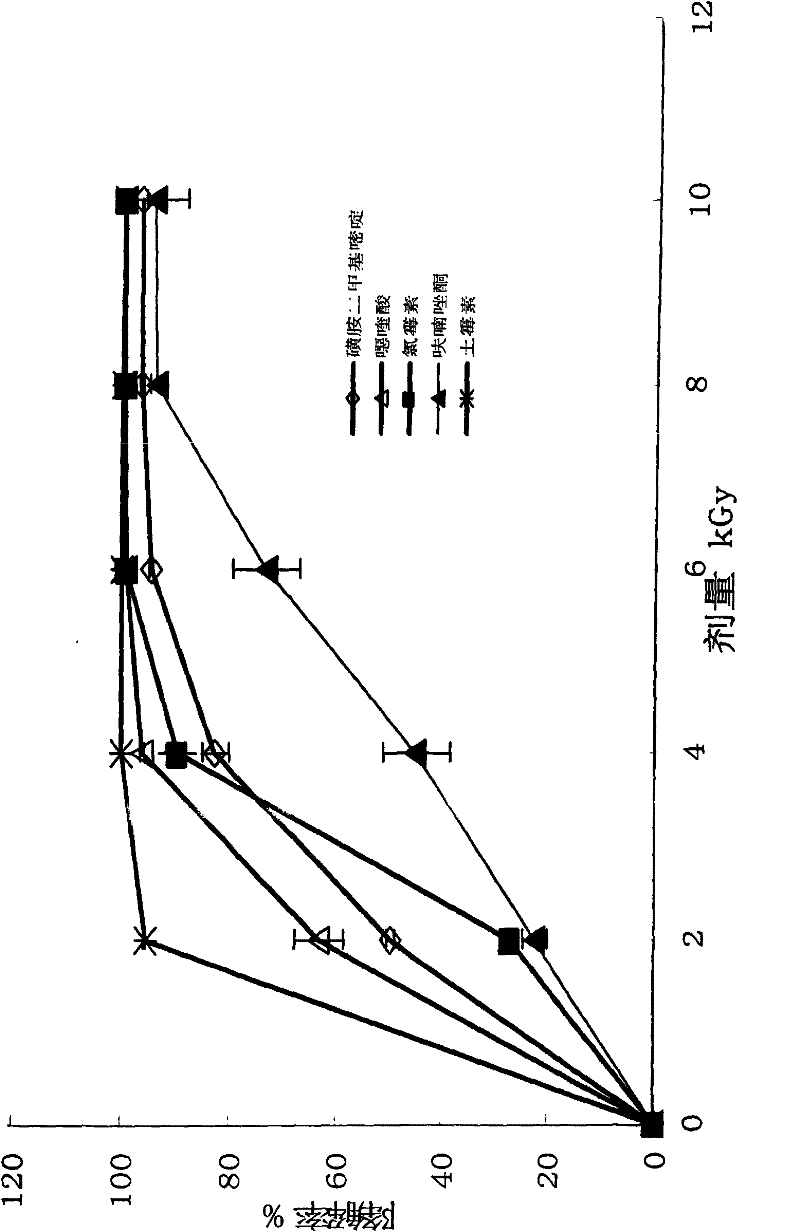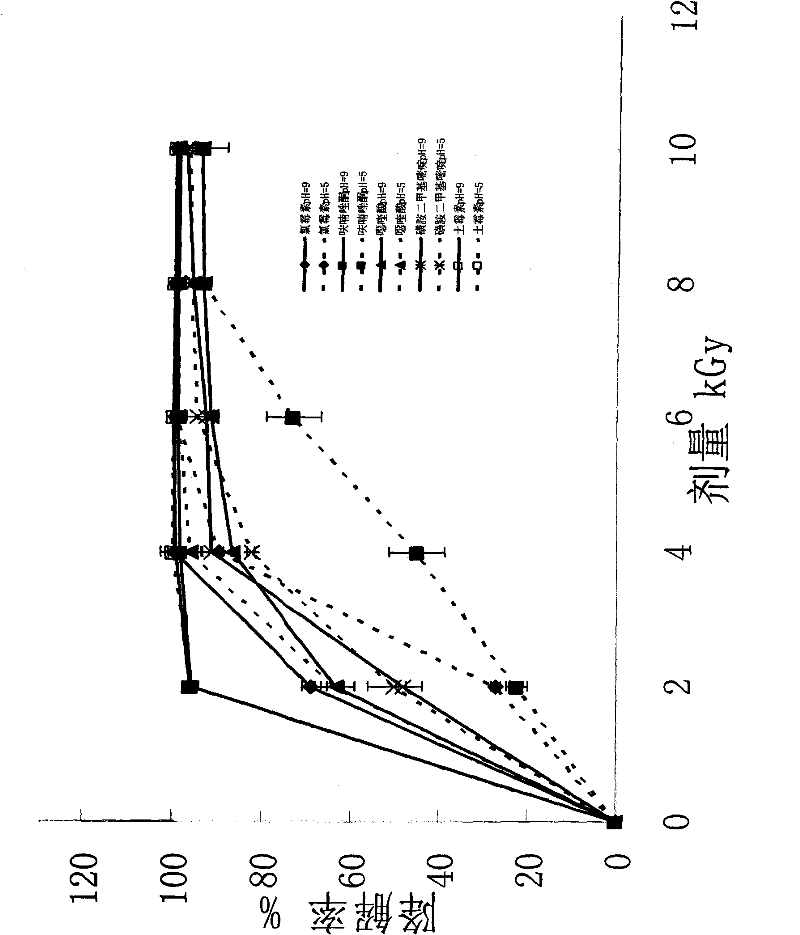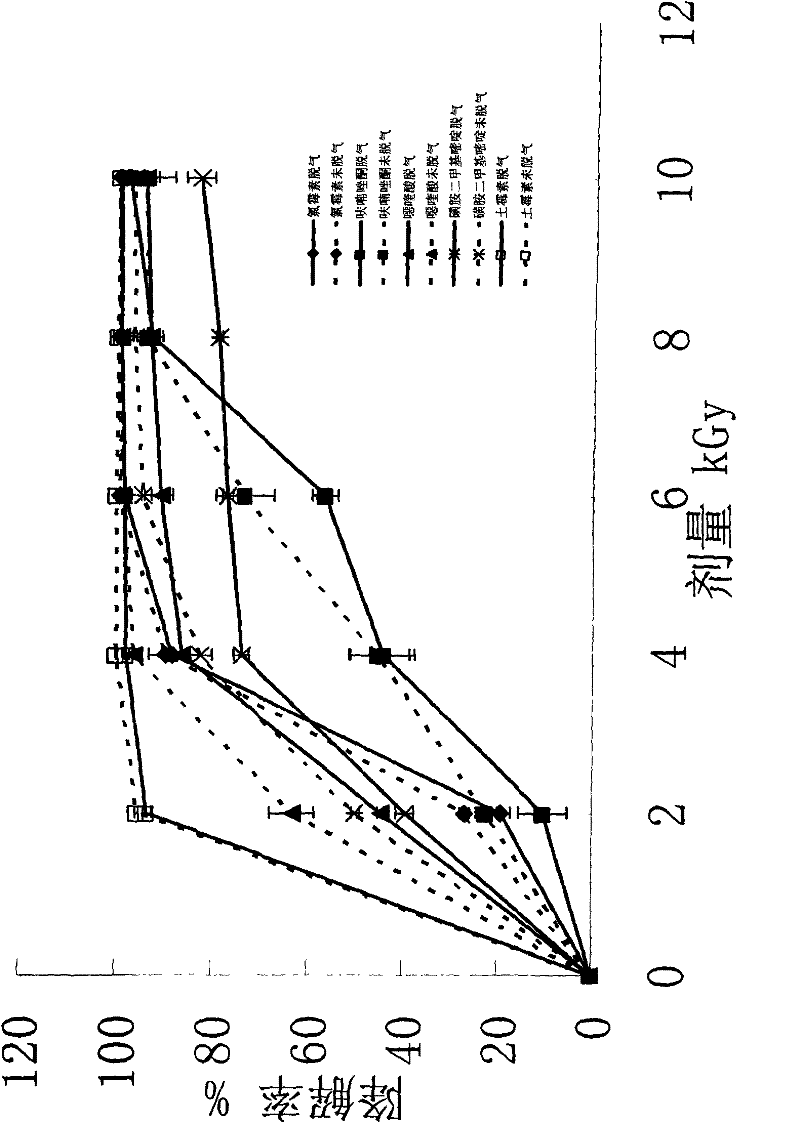60Cogamma-ray irradiation for degrading five fish drugs of chloramphenicol, sulphadimidine, terramycin, oxolinic acid and furazolidone
A technology of sulfamethazine and furazolidone is applied in the field of degradation of five kinds of fishery drugs chloramphenicol, sulfamethazine, oxytetracycline, oxaquinic acid and furazolidone by 60Co gamma ray irradiation, and can solve the problem of radiation. There are no systematic research reports and lack of systematic research in the structure identification and safety evaluation of irradiation intermediates and irradiation products.
- Summary
- Abstract
- Description
- Claims
- Application Information
AI Technical Summary
Problems solved by technology
Method used
Image
Examples
Embodiment Construction
[0013] In the present invention, 60Co gamma rays are used to irradiate water containing five fishery medicines such as chloramphenicol, sulfamethazine, oxytetracycline, oxquinic acid, and furazolidone, and degrade them. In order to study a good degradation effect, the present application The following tests were carried out.
[0014] The applicant has done a test of the degradation effect of the irradiation dose on five kinds of fish drug aqueous solutions.
[0015] The degradation effect of different kinds of fish medicine aqueous solution is shown in figure 1 . 100mg / L of fish medicine by different doses 60 After Co γ-ray irradiation, the degradation trends of various fishery drugs were the same, 60 The absorbed dose of Co γ-ray irradiation is 2-10kGy. The degradation rate increases with the increase of the dose. When the irradiation dose reaches 8kGy, the degradation rate of the five fishery drugs can reach more than 90%. The reason is that the higher the radiation ene...
PUM
 Login to View More
Login to View More Abstract
Description
Claims
Application Information
 Login to View More
Login to View More - R&D
- Intellectual Property
- Life Sciences
- Materials
- Tech Scout
- Unparalleled Data Quality
- Higher Quality Content
- 60% Fewer Hallucinations
Browse by: Latest US Patents, China's latest patents, Technical Efficacy Thesaurus, Application Domain, Technology Topic, Popular Technical Reports.
© 2025 PatSnap. All rights reserved.Legal|Privacy policy|Modern Slavery Act Transparency Statement|Sitemap|About US| Contact US: help@patsnap.com



